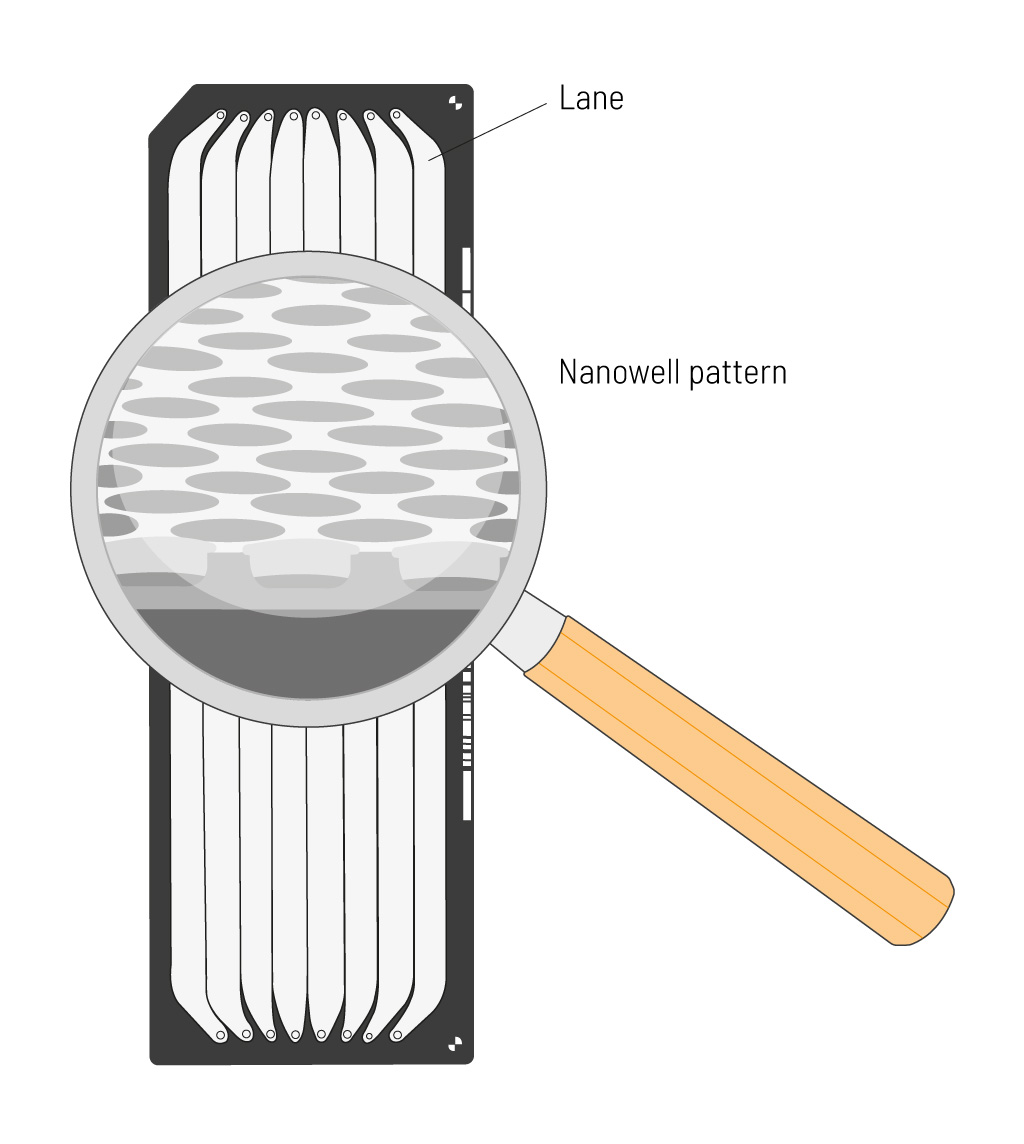When dealing with next-generation sequencing, you can’t avoid the term flow cell. A flow cell is the physical compartment where sequencing happens. Different types of flow cells are available for the same sequencing platform. Maybe you have wondered how a flow cell is constructed so that sequencing is possible on it? What are clusters, what does lane loading mean, and what is relevant for your project plans? We want to answer these questions.
Illumina flow cells are hollow glass slides with single fluidic channels, so-called lanes. The design of an Illumina flow cell is shown in figure 1. Their surfaces are patterned with equally distributed nanowells. Within the nanowells, oligonucleotides are placed, enabling the binding of the sequencing libraries. At the beginning of the sequencing run, clusters are generated from the library molecules bound in the nanowells. Clusters have thousands of copies of single-stranded DNA fragments. Each of these clusters results in a single sequencing read. These reads are generated in the further sequencing process, where fluorescent-tagged nucleotides bind to the DNA template strand. Cameras capture this process.
Figure 1 | Exemplary Illumina flow cell setup with eight lanes.
So far, it has become clear that some components of a flow cell, like nanowells, are of technological relevance. The lane structure of the flow cell brings along usability advantages. But why? Lanes physically divide the flow cell. They have dedicated input and output ports, which makes it possible to load a sequencing library pool not only on the whole flow cell but also on one or several separate lanes. This process is called lane loading. By using the lane loading option, multiple independent sequencing pools, even with identical barcodes, can be sequenced on the same flow cell. The sequencing mode is essential for parallel sequencing – it must be chosen equally for the whole flow cell and, consequently, for all lanes. The available output per lane depends on the clusters generated per flow cell. As indicated above, clusters can only be generated in the nanowells, which are equally spread over the flow cell. The equal distribution allows the same number of clusters to be generated for each lane. Thus, the maximum output per flow cell can be divided equally by the number of lanes. Hence, the possibility of lane loading offers higher flexibility for sequencing projects.
In conclusion, some structures of an Illumina flow cell are not only of technical relevance but need to be considered in project planning. The number of clusters determines the maximum output of the flow cell types. Lane-loading options are available if these flow cell types do not fit your needs. We offer sequencing your library pools either on a complete flow cell or on one or several lanes. Single-Lane Sequencing is available for the 25B flow cell. This lane-loading option increases the flexibility of your project and enables cost-efficient sequencing even for smaller sample numbers.

